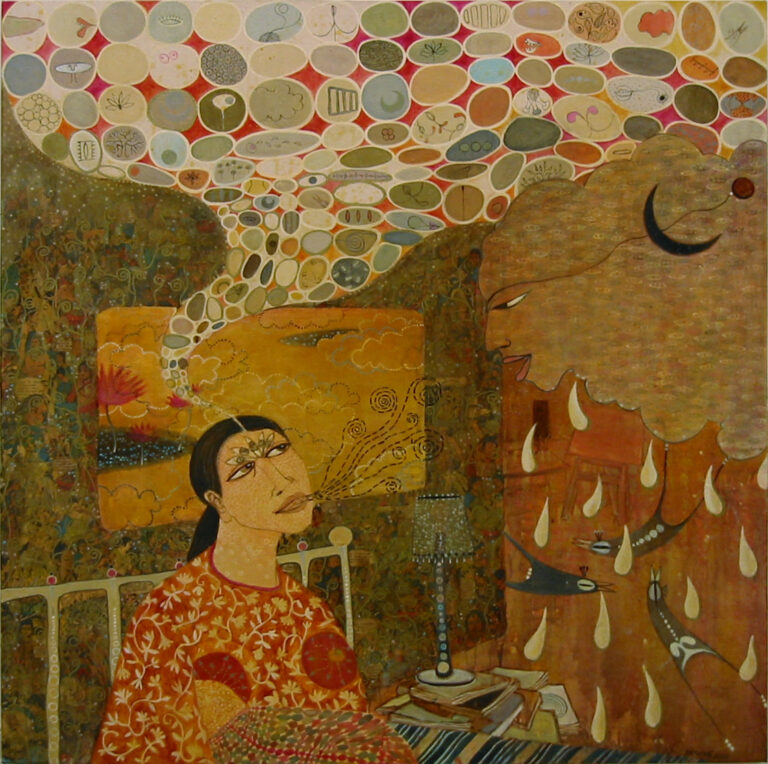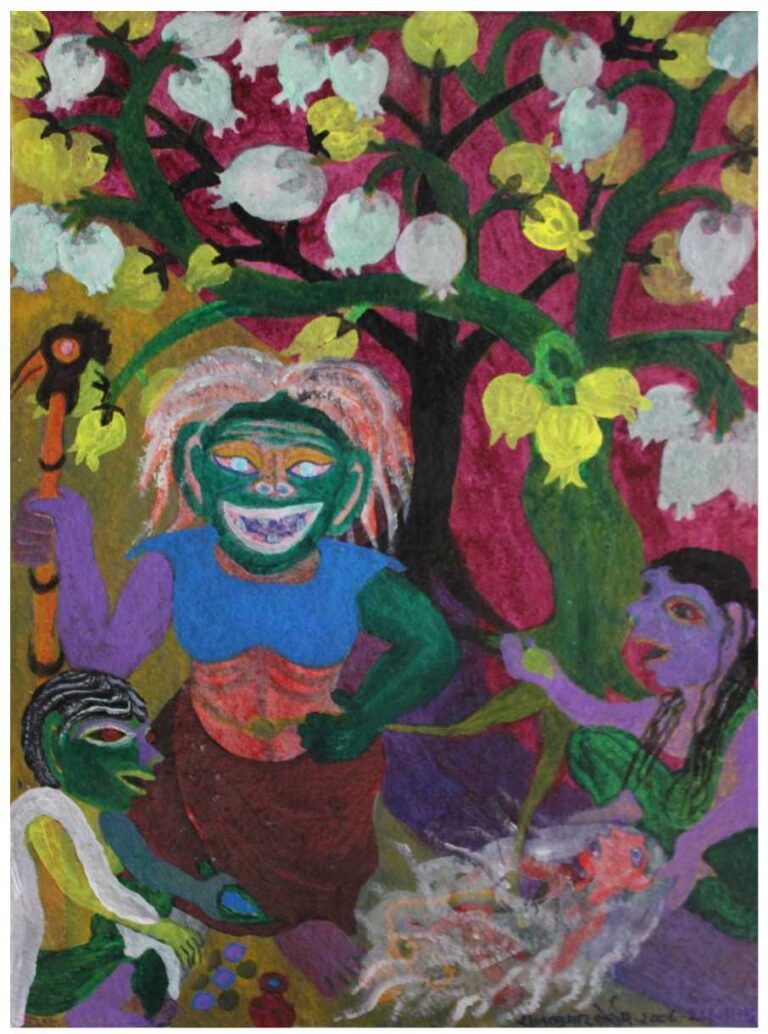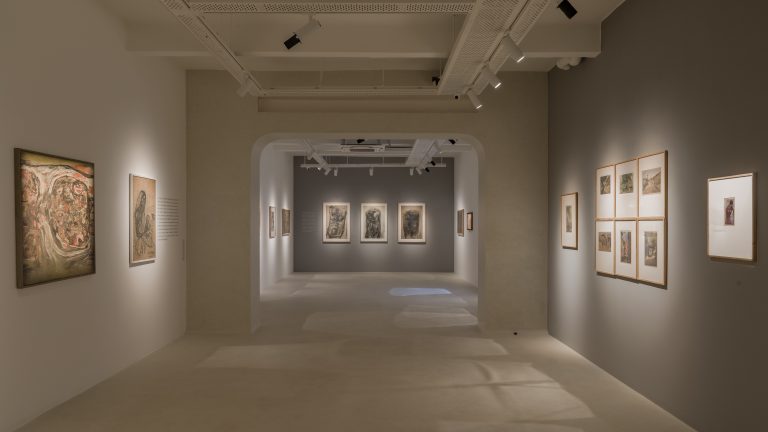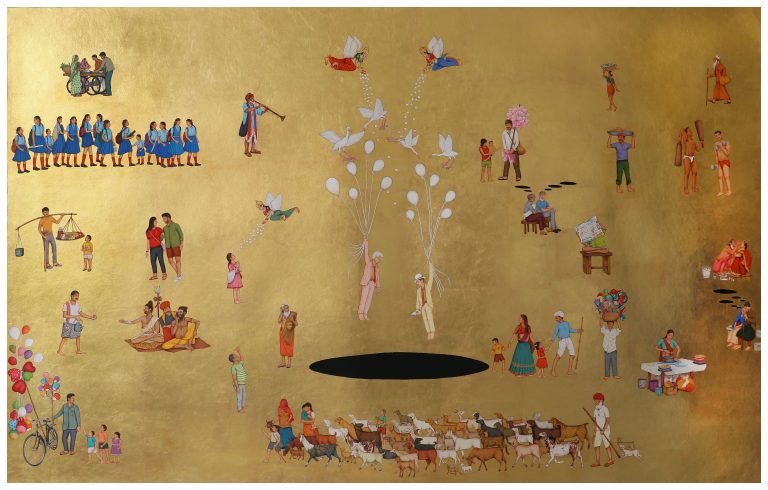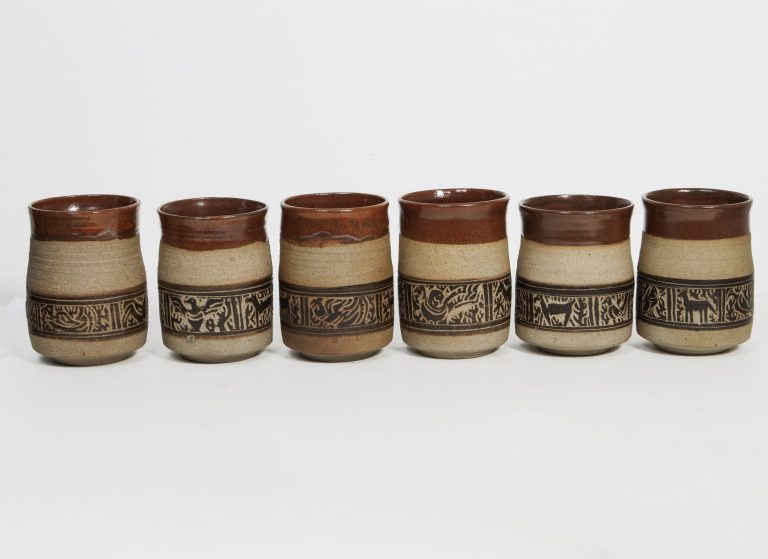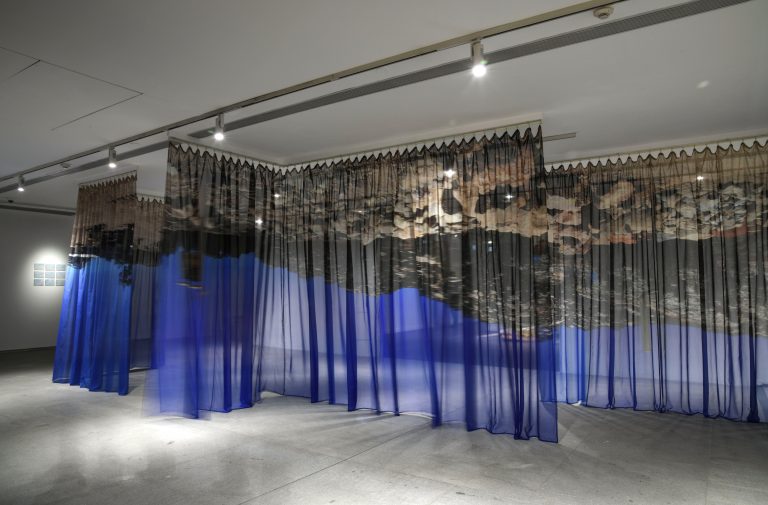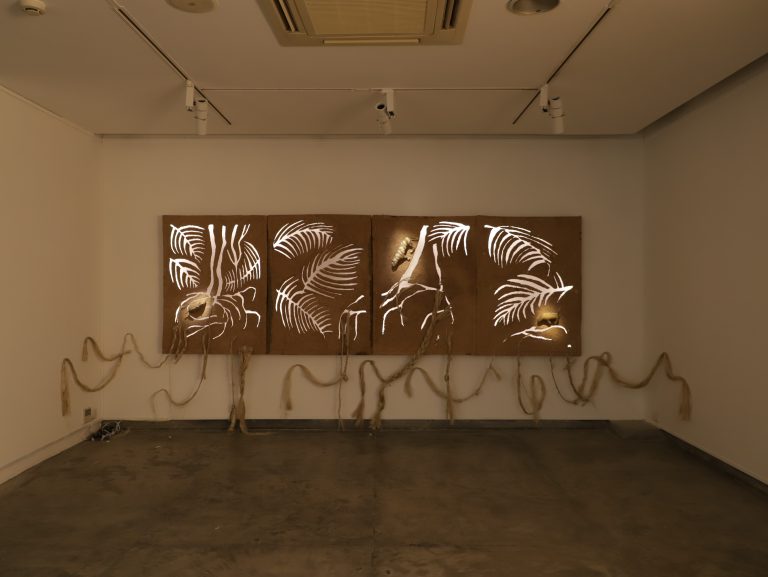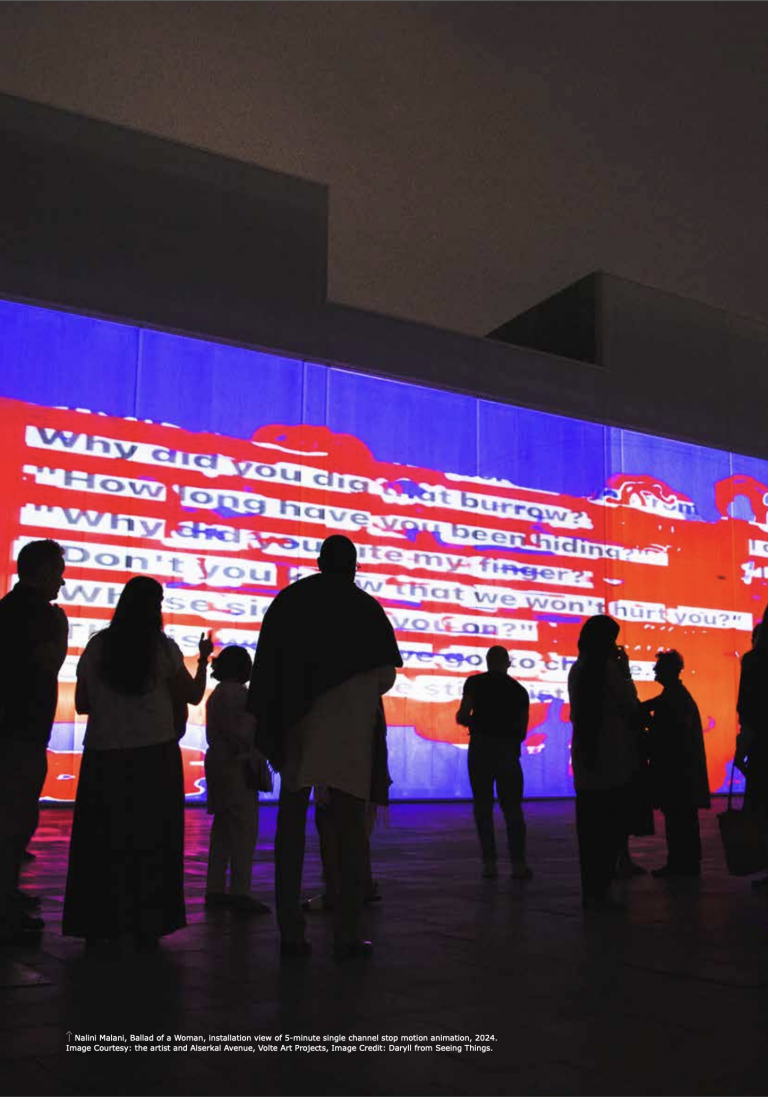Review
A Bridge is built from Two Sides: Far Reaching Earth, Far Extending Sky, Spread like a Mat, Covered like a Bowl
In a conversation between Korram and Rahee Punyashloka, the curator of exhibition, the former remarks that guns, whether toys or weapons in the hands of guards, are part of daily life in Bastar. During elections, festivals and other such large gatherings, the presence of armed personnel is naturalised under the name of security. The effect is to position violence not at the periphery but at the centre of experience, where it becomes impossible to separate civic, ritual or recreational activities from the shadow of militarisation. In particular, these sculptures highlight the speed of modern forms of violence and deforestation, such as automatic weapons, heavy machinery for logging and armed jeeps used by hunters.
Read MoreFragile worlds
Ravikumar Kashi’s ‘Fragile Worlds’ at the Museum of Art and Photography, Bengaluru, evokes the permeability of form, memory, and meaning. Through delicate, net-like sculptures and poetic explorations of language, the exhibition invites viewers into a tactile, immersive meditation on fragility, interconnectedness, and the porous edges of self and society.
Read MoreVisceral Realities: Experiencing the Works of Jogen Chowdhury
This review by Dr. Aranya Bhowmik explores In Celebration: Jogen Chowdhury at Art Exposure Gallery, Kolkata. Curated by Soumik Nandy Majumdar, the exhibition traces Chowdhury’s evolving visual language—spanning refugee memories, surreal dreamscapes, and politically charged figures—revealing a deeply personal modernism marked by psychological depth, empathy, and cultural rootedness.
Read MoreThe Posthuman In Heaven (And That Other Place)
A Review of Waswo X Waswo's show Heaven (And That Other Place), held during 10 October - 17 November, 2024 at GALERIE ISA, Mumbai.
Read MoreFrom the Ghor to the Gallery: Liberating the Feminine Realm in Indian Art
Review Of Spaces of Their Own: Women artists in early 20th century India, Curated by Aparna Roy Baliga and Debdutta Gupta, September 19 - October 15, 2024, Akar Prakar, Kolkata.
Read MoreThe Elemental You
A special feature of the show were the profound texts that accompanied some of the works. That was another point of convergence for the three participating artists—all of them are remarkable writers, in the words of the curator, who has not shied away from sharing their creative output in the written form as well. The show pushed the boundary of viewing art through our traditionally calibrated lenses and, in doing so, put KNMA in a different league of nurturing Indian art (needless to say, it is already in a different league altogether). With an overwhelming majority of Indians consuming and creating art through conventional tropes, shows such as ‘The Elemental You’ awaken us to the limitless possibilities that we ignore for the sake of convenience.
Read MoreA Transformative River and Embedded Dialectics: Reflections on a river of unrest …a delta of dreams by Paula Sengupta
In many ways, Sengupta’s project is situated between “a river of unrest” and “a delta of dreams.” It is the silent space that occupies the void between evidences, oral narratives, sensory experiences, memory and creative reconstructions. Calcutta and its colonial history have been addressed in her art projects the last two decades offering an unique perspective to assess and apprecitate the city’s entanglement of past and the present. In this recent project, Matiaburj (in which mati indicates clay/mud, and burj implies tower) in south west of Calcutta by the river remains a key site where authoritarian and local histories juxtapose, where fiction-like facts makes way for Sengupta’s ambitious creative reimaginations. With a mindful selection of historically informed materials, that include inherited and constructed textiles, jute fibre, paper pulp and graphic prints, archival history is brought in a dialogue with sensorial experiences.
Read MoreA Primordial Roar
‘Can You Hear Me?’ is a triggered, and triggering, response to a shocking incident of recent history. It drives Nalini Malani’s narrative into an animation where the central protagonist is an 8-year-old girl, whose soul eventually metamorphoses into that of a bird. The show is composed of a sprawling nine- channel video installation, featuring over 88 iPad- drawn animations created between 2018 and 2020, reorganized into a form of an ‘Animation Chamber’. It refers to this poor child’s violent assault and eventual murder by seven men, inflaming already stretched age-old religious tensions and sparking a debate on communal hatred that became a national and international news story, that unfortunately continues to gain notoriety due to shockingly similar and regular reoccurrences. The imagery is loose, and the text is interlaced and juxtaposed, its treatment is playful yet compelling, hiding its dissolute and bleak reality in light-hearted colour changes and buoyant edits.
Read More





